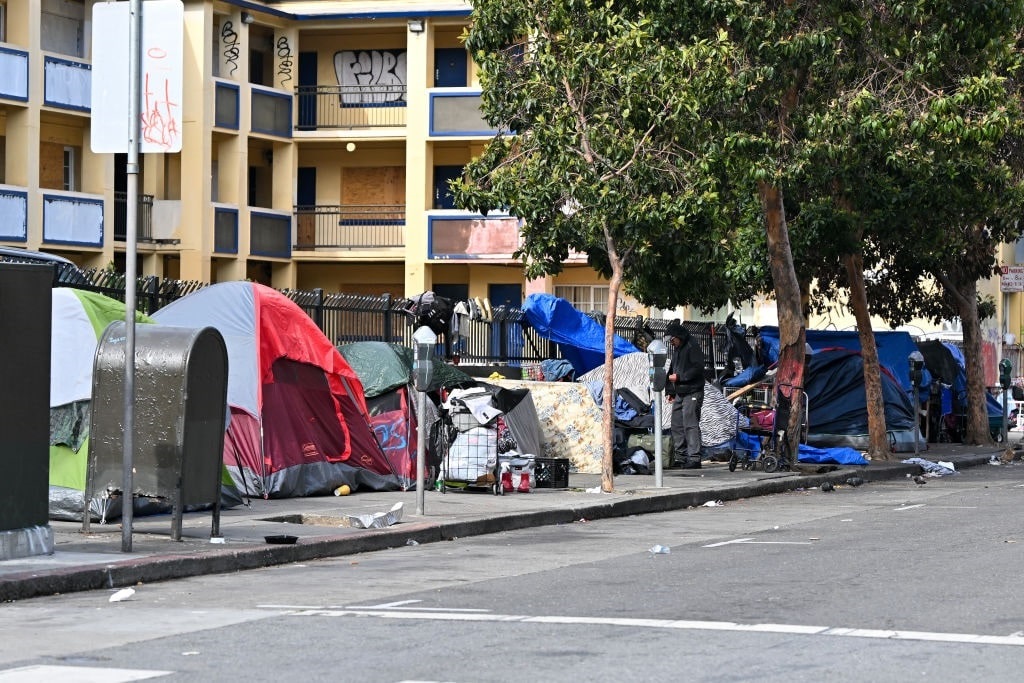Highest number ever to hit the streets in 2023.
A report from the Department of Housing and Urban Development (HUD) is a shocking reminder that the problem of homelessness in America continues to grow. Discovering how many people live an itinerant lifestyle is particularly heartbreaking during the Christmas season when families typically gather at home.
HUD estimated that 653,100 people are homeless in the United States. In just one year, the number of those without a roof over their heads increased by 12%, which means approximately 70,000 more homeless people this year compared to 2022.
The US government divides this number into two categories: sheltered and unsheltered. A sheltered homeless person can access transitional housing and emergency shelters or take advantage of a safe haven program. Technically speaking, these people are still homeless – just not living on the street. The good news is that six out of ten are among the sheltered. The bad news is that the other four are living “in places not meant for human habitation,” according to HUD.
Homelessness — Mostly an Urban Problem

(Photo by Tayfun Coskun/Anadolu Agency via Getty Images)
San Francisco is the poster child for the unsheltered, including those living under bridges, on sidewalks, or in just about any urban space where they can establish an encampment. Last month, Gov. Gavin Newsom (D) confessed to rounding up those living on the streets of San Fransisco to give visiting Chinese President Xi Jinping a false impression that there is no homeless problem in the City by the Bay.
Still, San Francisco is not the city with the largest homeless population in the US. That dubious prize goes to Los Angeles city and county, where more than 65,000 people are reported homeless.
In the United States, most large urban areas are dealing with some level of homelessness with relatively stable demographics. Thirty-seven percent are black, and 28% identify as Hispanic or Latin. However, it is the Asian population with the most significant percentage increase in homelessness this year, rising by 40%.
Sadly, US veterans are among those living in shelters or on the street; between 2022 and 2023, the number of homeless vets increased by 7% for a total of 35,574 service members.
Homelessness generally mirrors economic conditions, and with rising interest rates, a push for expensive green energy, and inflation, it’s no wonder the number of those unable to maintain a home is on the rise. Then there’s the dirty little secret, which turns out to be the elephant in the room, as Liberty Nation’s Joe Schaeffer referred to in his article on homelessness in Los Angeles:
“Homelessness is soaring in Los Angeles and its surrounding suburbs just as the uber-progressive California city is poised to officially declare itself a ‘sanctuary city’” for illegal aliens. But don’t expect establishment entities wringing their hands over the problem to put two and two together. A narrative of blazing tragedy must be rolled out, and it won’t include uncomfortable acknowledgment of the gasoline being poured on the inferno.”
Since President Joe Biden’s reversal of the previous administration’s policy, the US-Mexican border has been flooded with illegal immigrants, and sanctuary cities are finally getting a taste of just what that means. It doesn’t take a genius to understand that many of these displaced people will end up homeless and hopeless on the urban streets of our largest cities.
There are many reasons for homelessness in America – from drug abuse to mental illness to illegal immigrants crossing the border with no place to go. The government can’t seem to fix the problem, but a private-sector solution may be on the horizon.
The Tunnel to Towers Foundation has begun a mission to eradicate veteran homelessness “by providing housing and services to Veterans who are homeless across America,” according to its website. This year, the non-profit opened a 161-room Veterans Village in Houston, TX, expressly to give homeless American vets a place to live. Once again, the private sector comes to the rescue on an issue that has completely confounded the government.
WWJD: What Would Jesus Do?
As we prepare to celebrate the birth of Jesus, it seems appropriate to note that the Savior had a bit in common with the homeless. Mary went into labor while she and her husband were traveling, and the newborn Prince of Peace had to sleep in the manger of a stable, not a house. As an itinerant teacher, Jesus spent much of his adulthood as a guest in other people’s homes, without a place to call his own. He understood the poor, widowed, and homeless, always advocating on behalf of those who had less. As Jesus acknowledged in Matthew 8:20, “Foxes have holes, and birds of the air have nests, but the Son of Man has nowhere to lay his head.” We understand that the home Jesus promised us is eternal, but do we risk losing that by turning our eyes away from those now downtrodden on the earthly streets?

